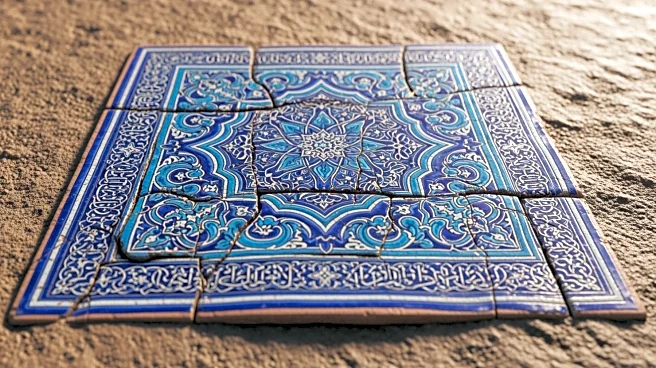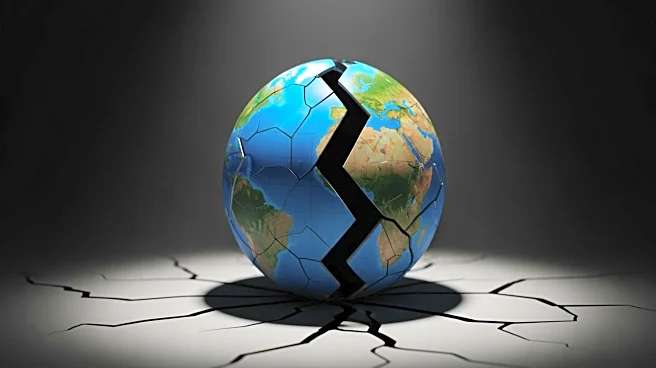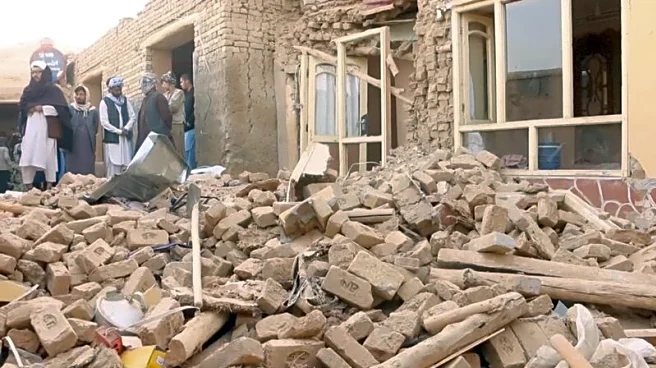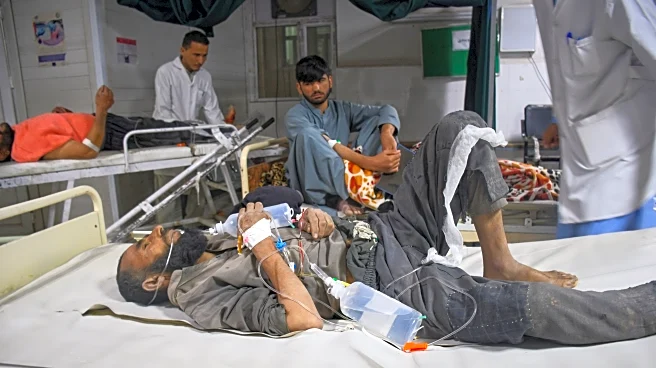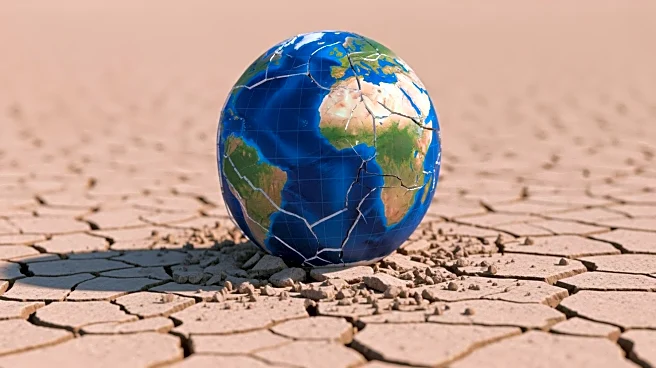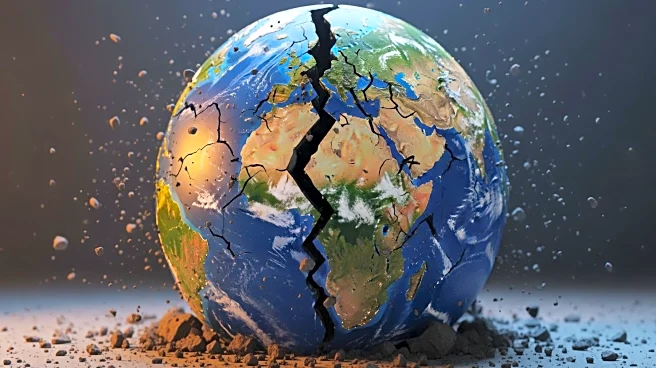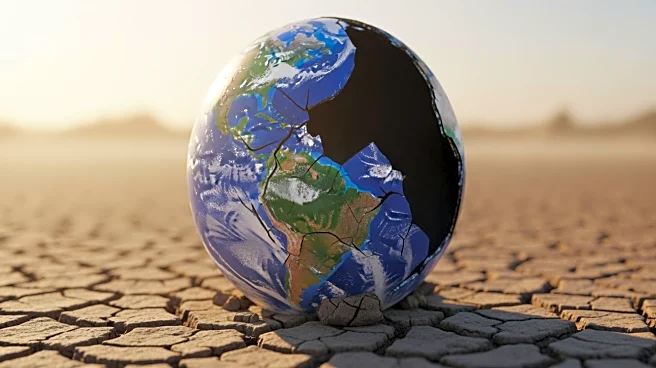What's Happening?
A powerful earthquake struck northern Afghanistan near Mazar-i-Sharif, resulting in at least 20 deaths and over 600 injuries. The earthquake, which occurred just before 1 a.m. local time, also caused significant
damage to the historic Blue Mosque of Mazar-e-Sharif, a site dating back to the 15th century. The US Geological Survey reported the quake's epicenter was 22 kilometers from Kholm in Balk Province. The Taliban government's Culture Ministry has pledged to assess and repair the damage to the mosque. This earthquake follows another major quake in August that killed over 2,200 people in eastern Afghanistan.
Why It's Important?
The earthquake's impact on the Blue Mosque highlights the vulnerability of cultural heritage sites in regions prone to natural disasters. The loss of life and injuries underscore the ongoing humanitarian challenges in Afghanistan, where infrastructure and emergency response capabilities are limited. The damage to homes and the onset of winter pose additional risks to affected communities, particularly children, who face harsh conditions with inadequate shelter. The repeated seismic activity in the region raises concerns about preparedness and resilience in the face of future natural disasters.
What's Next?
Efforts to repair the Blue Mosque and provide aid to affected communities are expected to continue. Humanitarian organizations, such as Save the Children, are mobilizing resources to support those impacted by the earthquake. The Afghan government and international partners may need to enhance disaster preparedness and response strategies to mitigate the effects of future earthquakes. The cultural and historical significance of the Blue Mosque may also prompt international interest in its restoration and preservation.
Beyond the Headlines
The earthquake's impact on the Blue Mosque serves as a reminder of the broader cultural and historical losses that can occur during natural disasters. The preservation of such sites is crucial for maintaining cultural identity and heritage. Additionally, the repeated earthquakes in Afghanistan highlight the need for improved building standards and infrastructure resilience to protect both people and cultural landmarks from future seismic events.
